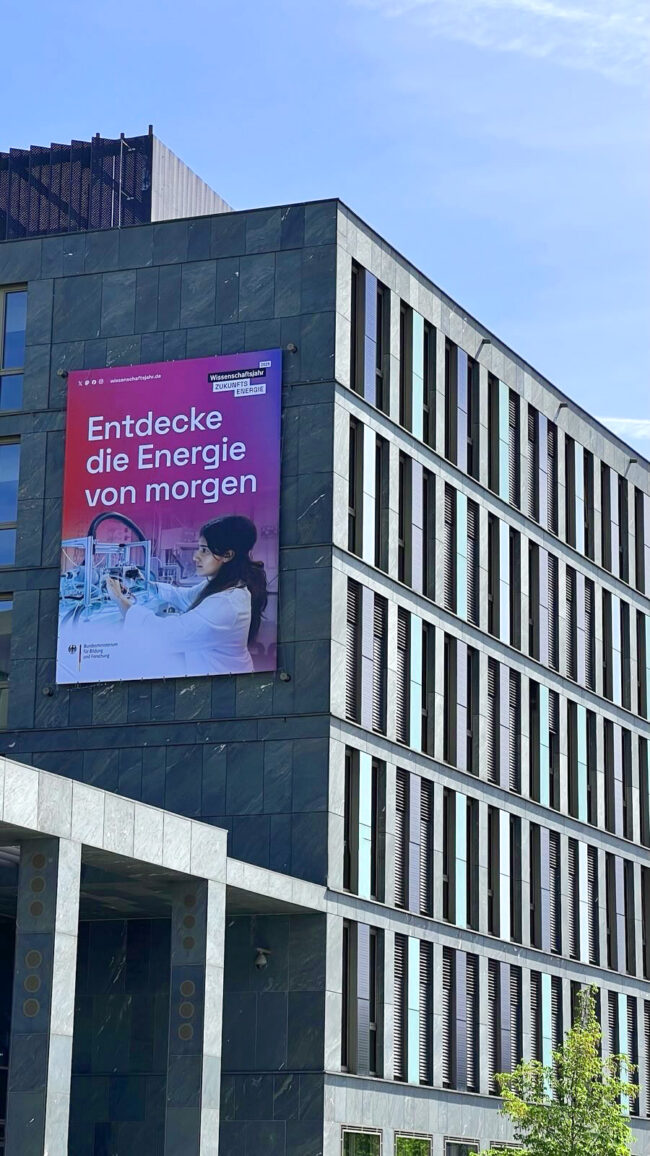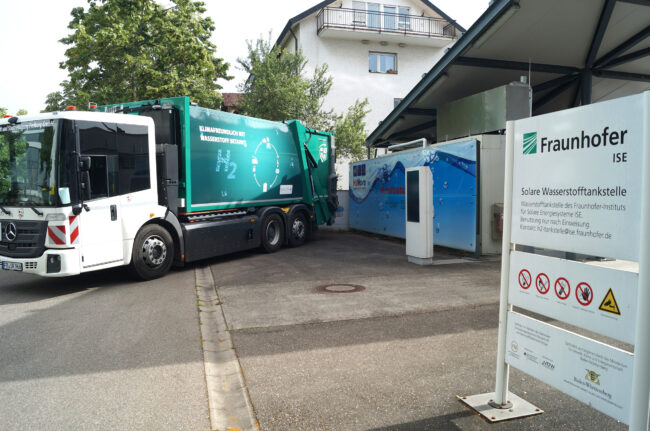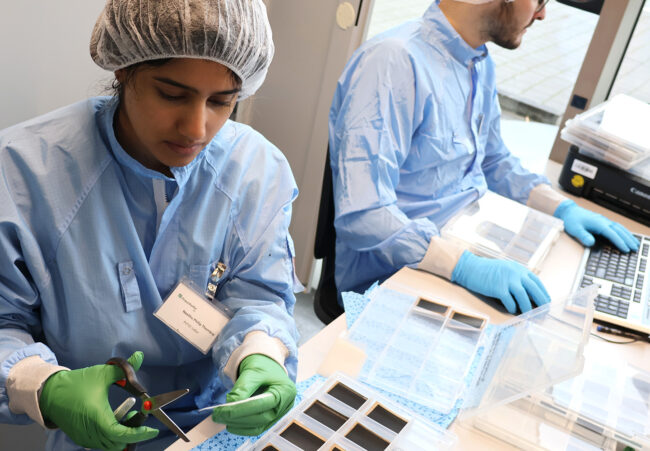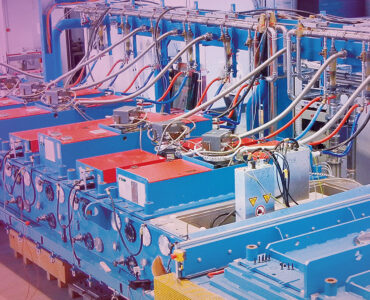The German Federal Ministry of Research, Technology and Space has dedicated its Science Year 2025 to solutions and ideas in energy research. For us at Europe’s largest solar research institute, this has been part of our DNA since 1981. That’s why we asked our colleagues what #FutureEnergy plays a special role in their everyday work. In this (mainly German) blog series, we introduce our researchers, their projects, and their personal views on energy and the energy transition.
Neethu Philip Thombra is the face of Science Year 2025, so she’s a must-have for our blog series. A photo of her in our fuel cell lab was picked for the campaign of the Federal Ministry of Research, Technology and Space. It’s high time to learn more about her work on the fuel cell of the future.

What are you researching at ISE?
I am working in the hydrogen fuel cell production group as a researcher. In our group, we develop the membrane electrode assembly (MEA), which is the part in a fuel cell where hydrogen is converted into electricity, heat and water. Therefore, you can say, it is the electrochemical heart of a fuel cell. MEAs of excellent quality which are produced efficiently, cost-effectively and sustainably are essential to the successful fuel cell mobility. With our production research in this area, we support the upscaling of fuel cells.
My research tasks mainly involve optimizing process conditions like temperature and pressure, based on material characterization techniques, and process development of the MEA production.

Neethu Philip Thombra
Research Associate Fuel Cell Production at Fraunhofer ISE
One of those research projects aiming to promote the ramp-up of fuel cell production for heavy-duty transportation in Germany, is called R2MEA. What contribution does the project make with regard to future energies?
In addition to battery electric vehicles, low-temperature fuel cells also represent an option for the heavy-duty and commercial vehicle sector to switch to emission-free mobility. Fuel cell vehicles are vehicles that convert hydrogen into electrical energy.
However, in order to introduce this climate-friendly mobility, fuel cell production needs to be industrialized. Projects like R2MEA focus on enabling mass production of fuel cell components, with ongoing research on developing roll to roll production lines, optimizing material consumption, process development and quality control, thereby helping industries to scale up from pilot scale to large scale fuel cell production.
To investigate and optimize this, we are setting up a huge pilot system in a technical center at Fraunhofer ISE. I am really looking forward to these gigantic 10-meter-long machines. Finally, we are conducting extensive market studies on industry requirements, techno-economic analyses on the economic efficiency of various production processes and life cycle analyses on the ecological footprint.

Is there another project at ISE that you consider to be particularly forward-looking?
We have an ongoing project looking into hydrocarbon polymers. These materials are an alternative for PFAS (per- and polyfluorinated substances), which are currently used in the production of membrane electrode assemblies. Since PFAS have been a topic of discussion recently, and the EU is actively working on regulating their use in different applications because of their potential risk to environment and health, this project is of great interest. Replacing PFAS from fuel cells with environmentally benign materials that offer advantages in cost and functional merits would be a win-win.

© Fraunhofer ISE
Why did you choose energy research?
While I was deciding on my application for master’s studies, the topic of renewable energy was gaining significant momentum. I decided to do the renewable energy engineering and management program at Freiburg University, which gave me a broader perspective of the importance of energy research and the need for clean energy solutions. Additionally, whilst studying, I also started a student research contract at Fraunhofer ISE, which gave me hands on experience in different technologies, adding to my learning curve.
Which future technology, besides fuel cells, are you enthusiastic about? Why?
Bioenergy with carbon capture and storage (BECCS) is a renewable source of energy, that utilizes waste product and could possibly lead to negative emissions. However, just like any other emerging technology, there are a lot of inhibitions. But I am interested to see how they are tackled in the long run, if the technology develops and grows.
What gives you personal energy?
Chocolate, and most importantly, working in my Fuel Cell Production team with curious, enthusiastic and easy-going individuals, which sets a positive environment at work.
Fraunhofer ISE is participating in Science Year 2025 – Future Energy with this blog series as well as other activities and events. All of our contributions can be found on our German Website















Add comment